A Defining Shift in Microsoft’s AI Data Strategy
At FabCon Europe 2025 in Vienna, Microsoft marked a strategic inflection point for enterprise data — the shift from unification to organization.
Over four days, the event underscored how Microsoft Fabric, once positioned as a unified analytics platform, has now become the foundation for AI-ready, context-rich data ecosystems.
Jessica Hawk, Corporate Vice President for Data, AI, and Digital Applications, framed it succinctly:
“Centralizing data is no longer the finish line — it’s the starting point.”
Modern AI systems demand not just data, but contextualized, structured knowledge capable of fueling reasoning, automation, and intelligent action.
This vision came to life through the unveiling of Graph, Maps, and enhanced OneLake integrations — capabilities that help enterprises move beyond data consolidation toward true AI readiness.
My Pick of Top Announcements: Powering Contextual Intelligence in the AI Era
1. Graph and Maps in Fabric: Turning Data Into Organized Knowledge
The highlight of the event was the introduction of Graph in Fabric (Preview) — a low/no-code platform for modeling and analyzing relationships directly within enterprise data.
Built on the same design principles that power LinkedIn’s global graph, this feature allows organizations to visualize customer, partner, and supply chain relationships as living systems — not static data tables.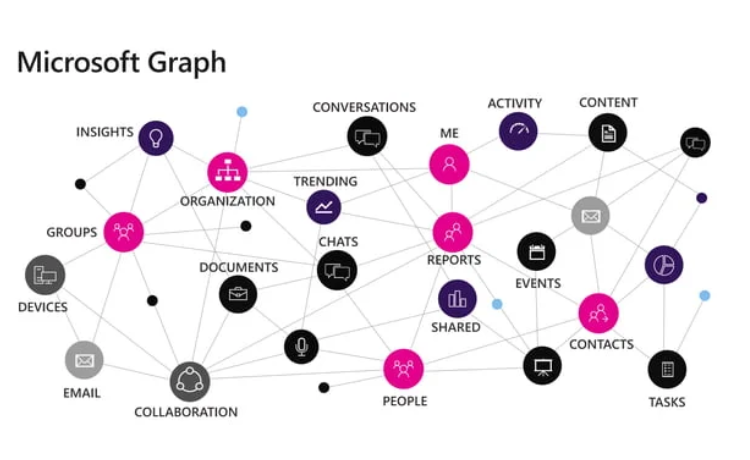
👉 Learn more: Graph Overview | Microsoft Learn
Complementing this, Maps in Fabric brings real-time geospatial analytics into the same platform. It enables users to enrich data with spatial context, helping teams make location-aware decisions in logistics, retail, and IoT-driven operations.
Together, these capabilities represent a major leap forward — transforming Fabric into a cognitive data infrastructure that understands not only numbers and events, but also relationships, locations, and meaning.
2. Developer Acceleration: The Fabric Extensibility Toolkit and MCP
Microsoft is continuing to democratize innovation by making Fabric more accessible to developers and solution builders.
The Fabric Extensibility Toolkit simplifies architecture and automation — ensuring every extension or custom workflow adheres to security and governance standards.
Meanwhile, the Model Context Protocol (MCP) empowers developers to use AI-assisted code generation and semantic modeling directly inside familiar environments such as Visual Studio Code and GitHub Codespaces.
This is a pivotal move that signals Fabric’s transformation into a build platform for enterprise AI, not just an analytics service.
👉 Explore MCP: Fabric MCP GitHub Repository 
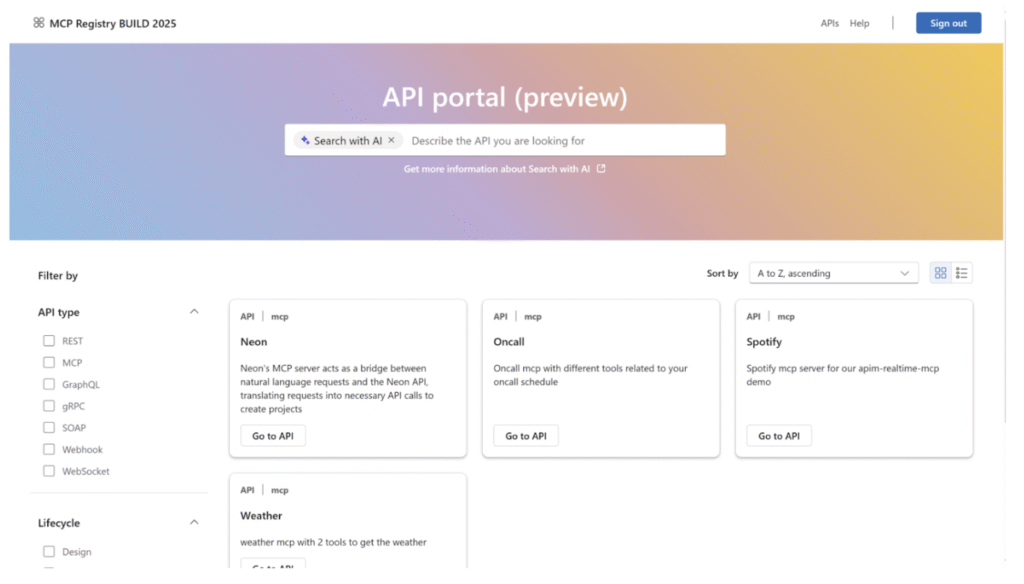
3. OneLake: The Unified Foundation for AI Data
At the heart of Fabric lies OneLake, Microsoft’s AI-ready enterprise data lake.
Microsoft announced several key improvements that solidify its position as the core data substrate for AI workloads:
- Mirroring for Oracle and BigQuery enables near real-time data synchronization, eliminating complex ETL workflows.
- OneLake shortcuts now extend to Azure Blob Storage, simplifying cross-cloud access.
- Automated file conversions from JSON and Parquet to Delta tables accelerate analytics.
- New Secure and Govern tabs in the OneLake Catalog streamline permissions and compliance oversight.
- Integration with Azure AI Search within Azure AI Foundry enhances context discovery for developers building smarter agents.
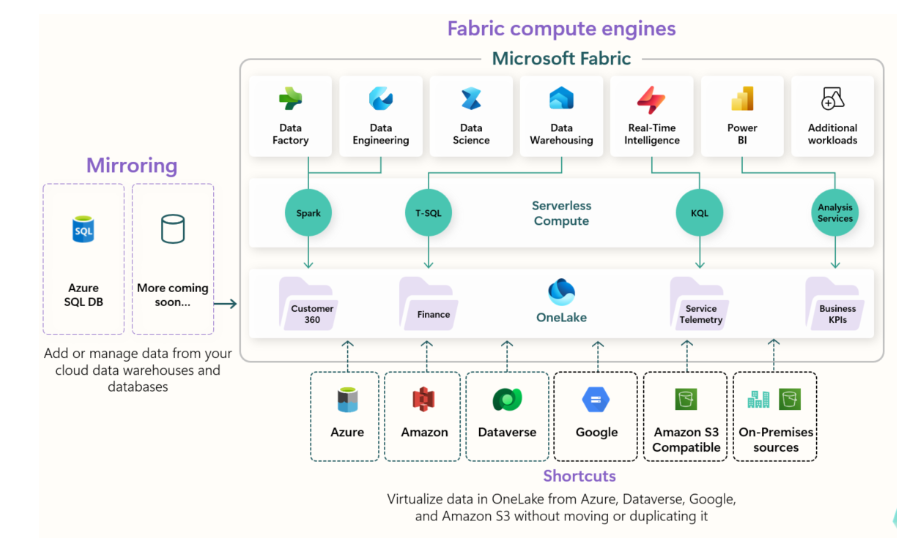
These innovations make OneLake the enterprise memory for AI systems — unified, compliant, and instantly usable across analytics, applications, and copilots.
👉 See more: OneLake Overview | Microsoft Learn
4. Fabric + Azure AI Foundry: A Unified AI Ecosystem
Microsoft is extending Fabric’s reach into the AI application layer through deep integration with Azure AI Foundry, creating a seamless bridge between data context and intelligent reasoning.
This unified foundation enables enterprises to design, customize, and manage AI agents that operate securely on top of governed enterprise data.
A practical example of this convergence is the Fabric Data Agent, now available in preview.
It allows Azure AI Foundry agents to directly query live Fabric data — including OneLake warehouses, lakehouses, and semantic models — to answer questions or generate insights through conversational interfaces.
This means copilots and enterprise AI apps can reason over trusted data with built-in security and lineage, all powered by Fabric’s governance layer.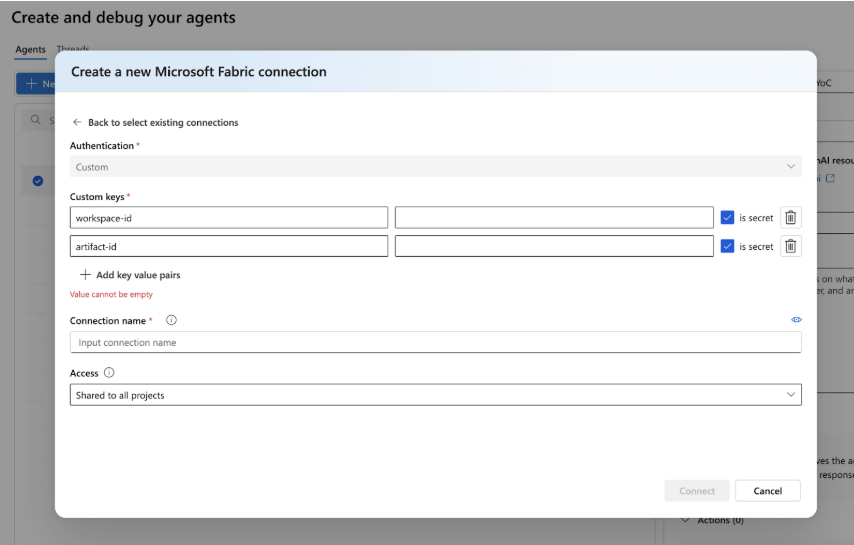
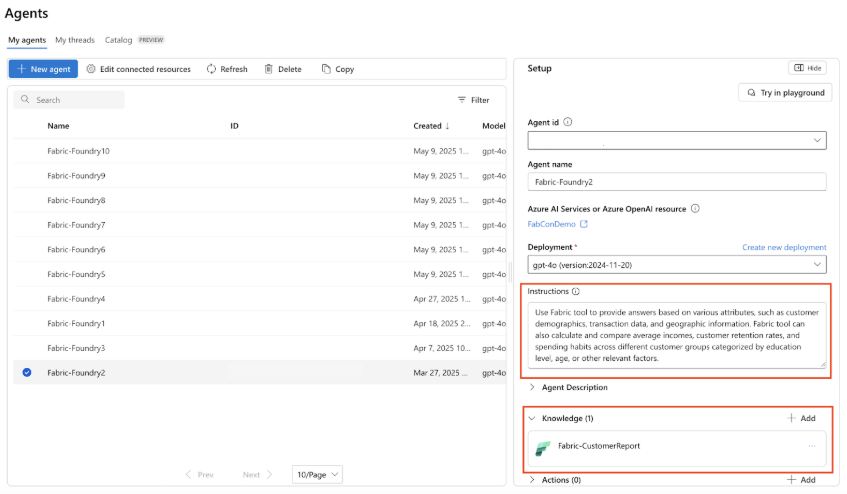
Together, Fabric and Azure AI Foundry form a complete data-to-AI ecosystem, collapsing complexity between data engineering, AI development, and enterprise governance.
The result: faster innovation, simplified compliance, and a scalable foundation for AI-native applications.
What CXOs Should Do Next (Prescriptive)
1. Rethink Data Strategy for AI
Move from centralization to organization.
Build a data fabric that understands relationships — using Graph to map dependencies, risks, and customer connections that AI systems can reason over.
2. Enable Context-Aware Decision Systems
Leverage Maps in Fabric to bring spatial intelligence into analytics.
From retail expansion to field operations, integrating location context can close the gap between model predictions and real-world execution.
3. Treat Fabric as an AI Application Platform
Encourage developer teams to adopt the Extensibility Toolkit and MCP for rapid prototyping of AI-native workloads.
Fabric is now the place where AI agents and copilots are built, not just where analytics happens.
4. Operationalize Governance from Day One
Use Fabric’s OneLake governance features — Secure tab, Govern tab, and Purview integration — to ensure that every AI system is backed by enterprise-grade compliance and data protection.
5. Align With Microsoft’s AI Ecosystem
Adopt a platform-first mindset by aligning your AI initiatives with Fabric and Azure AI Foundry’s joint roadmap.
This ensures your enterprise AI investments stay compatible, governed, and scalable across workloads.
Final Thoughts: From Unified Data to Intelligent Context
The message from FabCon Europe 2025 is clear: data unification was the beginning — AI readiness is the goal.
With Graph, Maps, OneLake advancements, and its integration with Azure AI Foundry, Microsoft Fabric has positioned itself as the control plane of enterprise intelligence.
This is more than a feature update — it’s a strategic reset for how enterprises design their data foundation for AI.
Fabric now stands at the intersection of context, governance, and intelligence — where every dataset becomes part of a living, reasoning ecosystem.
Views: 3.1K

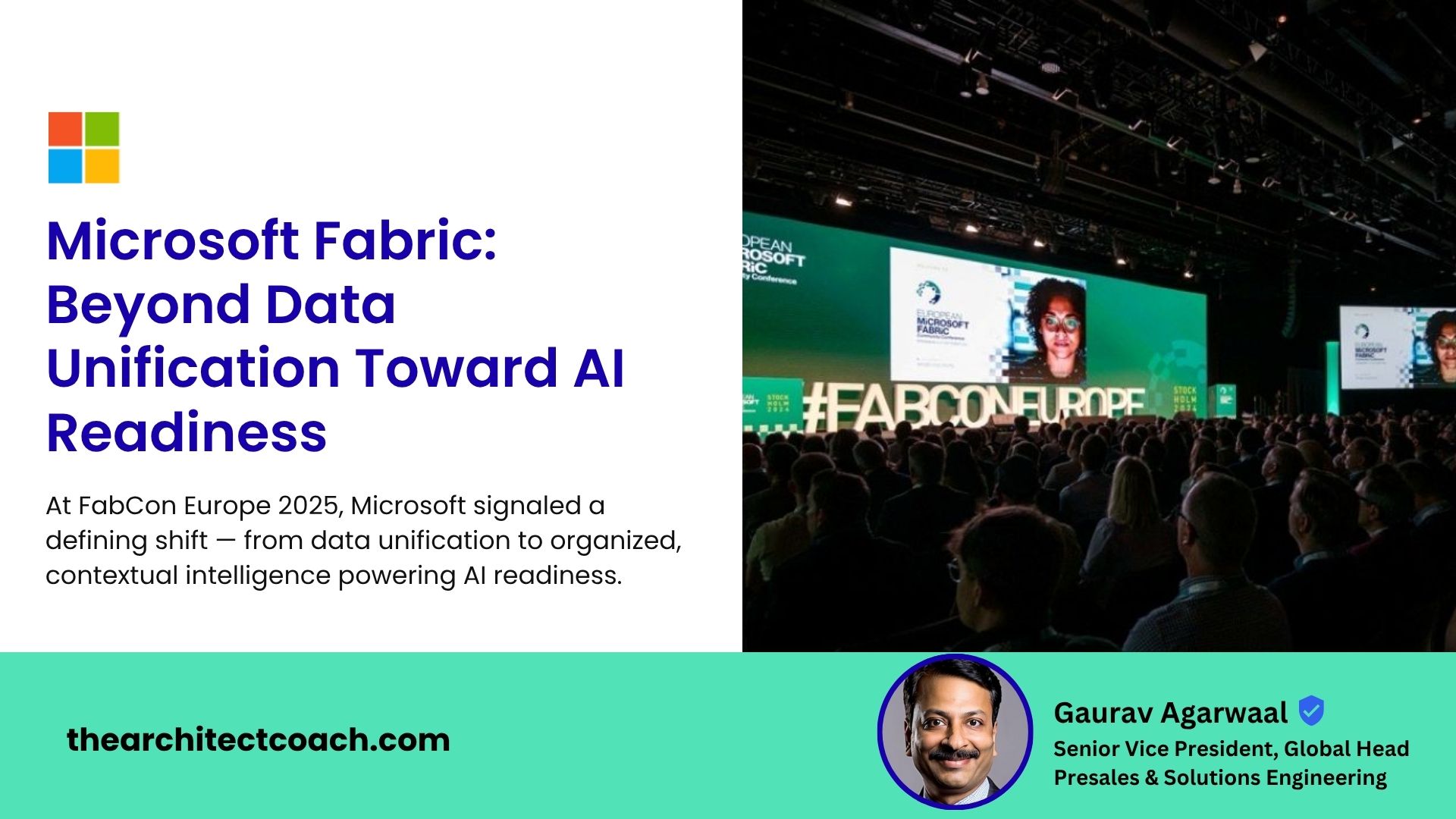
Your blog is a testament to your dedication to your craft. Your commitment to excellence is evident in every aspect of your writing. Thank you for being such a positive influence in the online community.